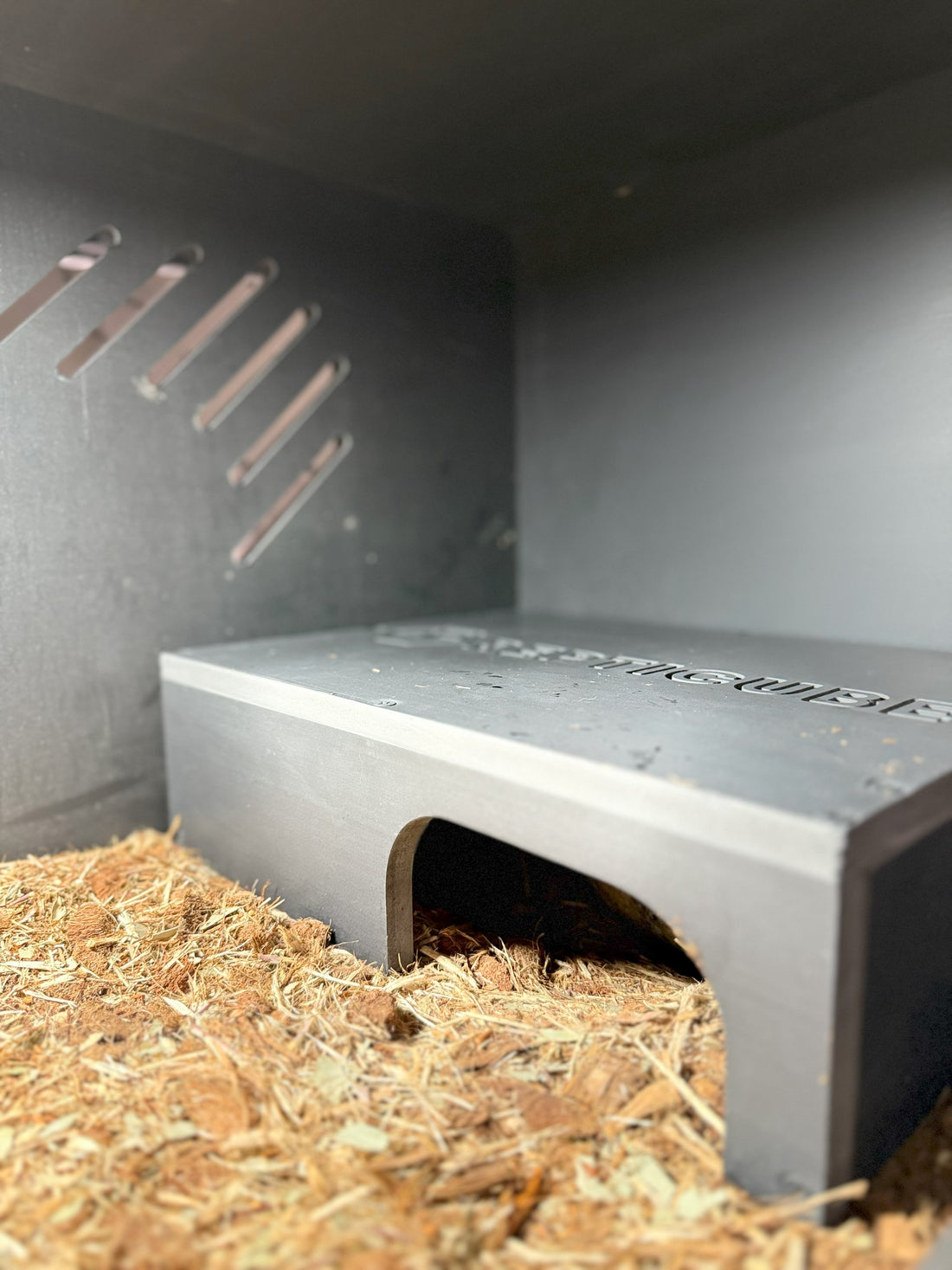
How to Create a Bioactive Terrarium – A Complete Step-by-Step Guide
How to Create a Bioactive Terrarium for Reptiles: A Guide for Gecko and Snake Owners
Creating a bioactive terrarium is like crafting a mini-ecosystem—a self-sustaining habitat where nature handles most of the heavy lifting. Think of it as building your pets their own rainforest or desert, complete with the benefits of natural cleaning and maintenance. For reptile owners, especially those caring for geckos and snakes, a bioactive setup offers an enriching environment that closely mimics their natural habitat. This guide will walk you through the essentials of creating a thriving bioactive terrarium tailored for geckos and snakes.
1. Understanding the Concept: What Is a Bioactive Terrarium?
Ever wondered why some terrariums look like slices of paradise while others seem sterile and uninspiring? A bioactive terrarium is designed to host live plants, beneficial microorganisms, and a clean-up crew (think tiny bugs like isopods and springtails) that keep waste in check. This setup mirrors a natural ecosystem where waste breaks down organically and fosters a healthier, happier pet.
For geckos, such as crested or leopard geckos, a bioactive environment can reduce stress and improve activity levels. Snakes, like ball pythons or corn snakes, benefit from more natural exploration and an instinctual sense of security. Plus, the maintenance for you becomes simpler—who doesn’t want that?
Pro Tip: Choose reptile-safe plants and ensure any species you introduce won’t harm your pet if nibbled on or rubbed against.
2. Choosing the Right Substrate for Your Reptiles
The substrate is the backbone of a bioactive terrarium—it’s where all the magic happens. For geckos, a mix of coconut fiber, organic topsoil, and sphagnum moss works wonders to maintain humidity and mimic their tropical homes. On the flip side, snakes like ball pythons may require a loamy blend that holds moisture without getting soggy, preventing respiratory issues.
Ensure your substrate is deep enough to allow burrowing, especially for geckos who love to dig. For snakes, having a layered substrate with areas of differing moisture levels helps mimic their natural environment, where they might seek out damp or dry areas depending on their needs.
Practical Tip: Create drainage layers at the bottom using pebbles or hydro balls to prevent waterlogging and help the substrate stay fresh.
3. Selecting Plants That Thrive
Not all plants are created equal when it comes to bioactive terrariums. Hardy, reptile-safe plants are key for success. For geckos, ferns, pothos, and bromeliads make excellent choices as they love higher humidity and indirect light. Snakes, depending on the species, may prefer less dense plant cover but still benefit from sturdy, larger plants like sansevierias or spider plants.
Plants not only add to the terrarium's visual appeal but play an active role in oxygenating the space and helping with waste decomposition. Plus, they provide climbing opportunities and hiding spots that can reduce stress and make your reptiles feel secure.
Evidence-Based Insight: Studies show that live plants help regulate humidity and air quality, directly impacting the overall health of reptiles.
4. Adding the Cleanup Crew
The cleanup crew is your built-in sanitation team, ensuring waste doesn’t pile up and bacteria growth stays in check. Isopods and springtails are the most popular choices for a bioactive terrarium. Isopods are slightly larger and can consume reptile waste, while springtails are tiny and work as detritivores, eating mold and decomposing plant material.
For geckos, these critters are great because they handle shed skin and uneaten food bits. Snakes will similarly benefit as their waste is broken down, creating a less labor-intensive cleaning process for you.
Did You Know? Adding beneficial nematodes to your substrate can further reduce pests and unwanted microorganisms.
5. Setting Up the Perfect Lighting and Temperature
Reptiles are cold-blooded, so the right lighting and temperature gradient is essential. Geckos, especially nocturnal species, don’t need strong UVB light but benefit from natural day-night cycles that a full-spectrum LED light can provide. Snakes, such as pythons, will need an appropriate heat source that mimics the warmth they experience in the wild.
Aim for ambient temperature ranges that suit your specific species and include basking spots. Humidity levels should be monitored using a hygrometer; geckos thrive in higher humidity (60–80%), while most snakes, depending on their natural habitat, need lower but steady moisture levels.
Quote to Consider: "Creating an environment that mirrors a reptile’s natural home isn’t just a luxury—it’s a necessity for their well-being." – Dr. Linda Maxwell, Reptile Behavior Specialist.
6. Maintaining and Monitoring Your Bioactive Setup
Once your terrarium is set up, it’s crucial to monitor and maintain it. While bioactive systems are self-sustaining to a degree, regular checks are essential to ensure your cleanup crew is active, plants are thriving, and your reptiles are comfortable.
Watering schedules should be adjusted to prevent plant rot but ensure adequate moisture for humidity. Periodic spot cleaning, such as removing large feces or uneaten food, helps the cleanup crew manage the rest.
Quick Maintenance Tip: Mist regularly but don’t overdo it. Overwatering can lead to mold growth, which, while manageable with springtails, can stress your reptiles.
Conclusion: Crafting a Natural Haven for Your Pets
A bioactive terrarium isn’t just an upgrade; it’s a lifestyle shift that benefits both the pet and the owner. For geckos and snakes, it mimics their true habitat, promoting natural behaviors and improving their quality of life. For you, it means less frequent deep cleaning and a terrarium that’s a living, breathing slice of nature. Take the time to understand your pet’s specific needs, and enjoy watching them thrive in an environment that brings the outdoors in.
Dive into this journey with patience and watch your geckos and snakes explore, rest, and flourish in their mini-ecosystem.
